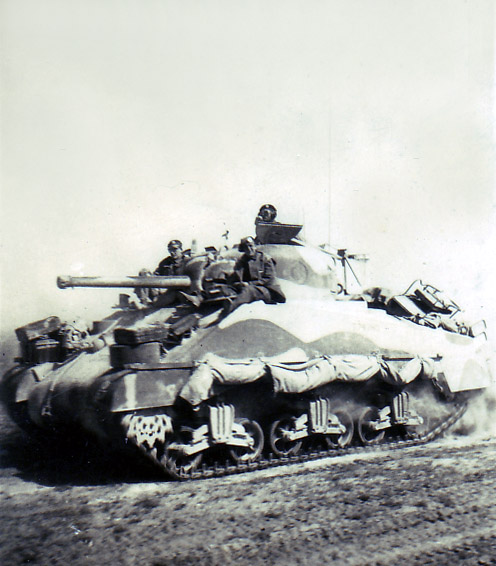
The new radial aircraft engined Sherman tank heading for trouble in the Western desert. These began surfacing early in 1942 some months after the arrival under the initial US/Anglo lend lease scheme of the very underated and impressive US Grant tank that saved the bacon of the inferior English mobile armour and associated English Divisional units. Unfortunately our 2NZEF forces were badly mauled on numerous occasions after excellent ground gaining infantry/artillery work was undertaken, only to lack the mobile armour in the critical closing stages of these fierce battles. Two such battles at El Meir Depression (where Charles Upham won his 2nd VC ) and a week earlier at Ruweisat Ridge, the Kiwis were unable to capitalise as such and succeed. Bitter pills after superb and intensive NZ Division fighting. Little compensation for heavy casualties recieved. The NZ Division took 1600 German and Italian prisoners at the Ruweisat ridge on July 14-15 1942. General Auchinleck gave clear orders to the supporting armoured columns of the NZ Division but a lack of initiative and unsound reasoning at Brigade command level coupled with a blatant refusal to move the mobile armour at night cost us dearly. Brigadier Howard Kippenberger was notoriously scathing of the 8th Army tank support of the Kiwi Division, which in most areas was fully accepted.
It is noteworthy that from this point on General Freyberg, understandably had little faith in his High Command to provide mobile armour and tank support for us. He along with his fellow Kiwi commanders decided that the NZ Division would provide their own mobile armoured tank support. This fine role was ultimately given to the 18th 19th and 20th Battalions of 4 Infantry Brigade who were gradually converted into combined Infantry Armoured Regiments and remained distinctly effective (Battle of Orsogna in Italy the exception) as such until our job was completed in Northern Italy May/June of 1945.
At the begining of the campaign into Italy during October 1943 the 2NZEF had near 4600 vehicles, including 164 new or refitted American Sherman tanks and 60 Staghound armoured cars. With a total of 22000 personnel consisting of 2 Infantry Brigades each with 3 Battalions and an armoured brigade of 3 armoured regiments and 1 motorised infantry battalion. The divisional artillery consisted of 3 regiments of field artillery, with 72 twenty-five pounder guns and an anti-tank regiment of 17 and 6 pounder anti-tank guns. Also included was a machine-gun battalion, the Divisional Cavalry, its own sappers or engineers and a high quality mobile General Hospital. The 2 New Zealand Division was an exceptionally powerful one and had proven itself a formidable fighting force, great in the open desert where mobility was key but. It is about to find out quickly that Italy with its mountainous terrain and deep valleys below much favoured the defenders. We were in for another steep and costly learning curve within the 1000 mile long by 100 mile wide Italian countryside. Although it must be said that the 28th Maori Battalion would also find its place here and with the Italian people not being that dissimilar to themselves. The native New Zealanders were quick to pick up the local lingo and also find Italian women irresistable. Along with the complimentary and normal lifestyle of regular consumption of local vino, not all was lost.
Photo of an American Sherman tank with what appears to be a crew being part of the Scottish Grey Guard Armoured Regiment who led along with the 28th and 21st Battalions (5 Brigade NZEF) the 8th Army into Tripoli.
Photographer Capt E V Hayward
Hayward family Rotorua. Denis Clough archive
No reproduction without permission

Comments (0)